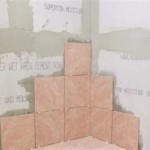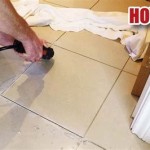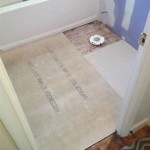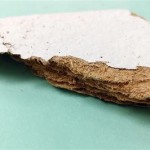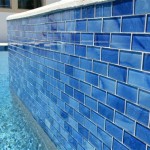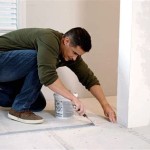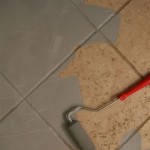Do I Need Backer Board For Floor Tile On Concrete Slabs?
Installing tile over a concrete slab is a common flooring choice, offering durability, aesthetics, and relatively low maintenance. However, the question of whether or not a backer board, also known as cement board, is necessary for this type of installation is a frequent source of confusion. The answer isn't always straightforward and depends on several factors related to the condition of the concrete slab, the type of tile being used, and the intended use of the floor.
Backer board serves as a substrate for tile, providing a stable and waterproof surface to which the tile can adhere. It is typically made from cement reinforced with fiberglass mesh, making it resistant to moisture and impact. While concrete itself would seem like a suitable substrate, it often presents challenges that backer board can help overcome. This article will explore these challenges and explain when using backer board on a concrete slab is recommended or even essential.
Understanding the Potential Problems with Concrete Slabs
Concrete slabs, while strong and durable, are not without their limitations as a substrate for tile. Several potential issues can arise if tile is installed directly on a concrete slab without proper preparation or the use of a backer board. These issues can lead to tile cracking, loosening, and ultimately, a failed flooring installation.
Firstly, concrete is porous and susceptible to moisture ingress. While it may appear dry on the surface, moisture can migrate through the slab from the ground below or from ambient humidity. This moisture can negatively affect the tile adhesive, weakening its bond and leading to tile detachment. Furthermore, if the concrete slab experiences significant temperature changes, the expansion and contraction can also affect the adhesive bond.
Secondly, concrete slabs are rarely perfectly level or smooth. Imperfections such as cracks, dips, and uneven surfaces are common. Installing tile directly on an uneven surface can result in uneven tile placement, difficulty in achieving a level floor, and increased stress on individual tiles. This stress can lead to cracking and tile failure, particularly under heavy loads or in areas with high foot traffic.
Thirdly, concrete can react chemically with certain tile adhesives. Alkali-silica reaction (ASR) is a common problem where the alkali in the cement paste reacts with silica in the aggregate, forming an expansive gel that can crack the concrete from within. This cracking weakens the concrete's structural integrity and, consequently, compromises the tile installation. Even without ASR, the concrete's alkalinity can sometimes interfere with the curing process of certain adhesives.
When Backer Board is Necessary
Given the potential problems associated with concrete slabs, there are specific situations where the use of backer board is highly recommended or even necessary for a successful tile installation. These situations typically involve moisture concerns, uneven surfaces, or specific tile types.
If the concrete slab is located in a moisture-prone area, such as a basement or bathroom, the use of backer board is strongly advised. Backer board provides a waterproof barrier between the concrete slab and the tile, preventing moisture from damaging the tile adhesive and causing mold or mildew growth. In these areas, using a waterproof membrane in conjunction with the backer board can provide an extra layer of protection.
When the concrete slab is significantly uneven or has numerous cracks, backer board can be used to create a level and stable surface for the tile. The backer board can be installed over a leveling compound or shims to correct minor imperfections in the slab. For more significant cracks, crack isolation membranes can be used beneath the backer board to prevent cracks from propagating through the tile.
Certain types of tiles, such as large-format tiles or natural stone tiles, are more susceptible to cracking or damage if installed directly on a concrete slab. These tiles often require a more rigid and stable substrate to prevent movement and stress. Backer board provides this extra stability, reducing the risk of tile failure. In addition, some tile manufacturers specifically require the use of backer board for their products to maintain warranty coverage.
Furthermore, if underfloor heating is being installed, backer board is often necessary to provide a suitable surface for the heating elements and to distribute heat evenly across the floor. The backer board helps to protect the concrete slab from the direct heat of the heating elements and prevents heat loss into the concrete.
Alternatives to Backer Board and Considerations
While backer board is a popular and effective solution for preparing concrete slabs for tile installation, there are alternative methods and considerations to keep in mind. In some cases, with sufficient preparation, backer board may not be absolutely necessary.
One alternative is to apply a self-leveling underlayment to the concrete slab. This material can create a smooth and level surface for tile installation, eliminating the need for backer board in cases where the primary concern is unevenness. However, self-leveling underlayment does not provide a waterproof barrier and may not be suitable for moisture-prone areas.
Another alternative is to use a crack isolation membrane. These membranes are designed to prevent cracks in the concrete slab from propagating through the tile. They are typically used in conjunction with a leveling compound to create a smooth and stable surface. While crack isolation membranes can be effective, they do not provide the same level of moisture protection as backer board.
Before deciding whether or not to use backer board, it is crucial that the concrete slab is properly prepared. This preparation typically involves cleaning the slab to remove any dirt, dust, or debris, filling any cracks or holes with a suitable patching compound, and applying a primer to improve the adhesion of the tile adhesive. In some cases, etching the concrete surface may be necessary to improve adhesion.
The choice of tile adhesive is also an important consideration. Using a high-quality modified thin-set mortar that is specifically designed for use with concrete slabs can improve the bond between the tile and the concrete. It is essential to follow the manufacturer's instructions carefully when mixing and applying the adhesive.
Ultimately, the decision of whether or not to use backer board for floor tile on concrete slabs involves a careful assessment of the specific conditions and requirements of the installation. Consulting with a qualified flooring contractor or tile installer can provide valuable guidance and ensure a successful and long-lasting flooring installation.
Considering the scope of the tiling project is also vital. A small area, such as a powder room that is not subject to heavy moisture might not necessitate backer board if the concrete slab is in good condition. However, expansive areas such as kitchens or bathrooms, even with seemingly sound concrete, benefit significantly from the added layer of protection provided by backer board.
The long-term costs associated with choosing not to use backer board should also be considered. While skipping the additional expense might seem appealing initially, recurring issues such as cracked grout lines, loose tiles, or even complete tile failure can quickly negate any upfront savings, leading to costly repairs or even a complete replacement of the flooring. The labor and material costs associated with re-tiling an area far outweigh the initial investment in backer board.
Specific Backer Board Installation Considerations
Assuming the decision is made to install backer board, proper installation is critical to maximizing its benefits. Incorrectly installed backer board can lead to the same issues as not using it at all. There are several key points to understand about backer board installation.
Firstly, the backer board should be cut to fit the area with minimal gaps. It is generally recommended to leave a small gap (approximately 1/8 inch) between the backer board sheets and the walls to allow for expansion and contraction. These gaps should be filled with a flexible sealant after the tile is installed.
Secondly, the backer board should be securely fastened to the concrete slab. This is typically done using screws specifically designed for use with cement board. The screws should be spaced according to the manufacturer's instructions, typically every 6 to 8 inches. It is important to ensure that the screws are driven flush with the surface of the backer board and do not protrude.
Thirdly, the seams between the backer board sheets should be treated with cement board tape and thin-set mortar. This helps to create a smooth and waterproof surface and prevents cracks from forming along the seams. The tape should be embedded in the thin-set mortar and allowed to dry completely before the tile is installed.
Finally, the type of thin-set mortar used to install the tile on top of the backer board is also important. A modified thin-set mortar is generally recommended, as it provides better adhesion and flexibility than unmodified thin-set. The thin-set should be applied according to the manufacturer's instructions, using the correct size trowel to ensure proper coverage.
By considering all of these factors and taking the necessary precautions, it is possible to achieve a durable, long-lasting, and aesthetically pleasing tile installation over a concrete slab. The investment in backer board and proper installation techniques can save time, money, and frustration in the long run.

How To Install Cement Board On A Floor Diy Family Handyman

How To Install Hardie Backer Cement Board On Floors James Pros
How To Install Tiles On Concrete Floors Stonesuper

Cement Board Installation On Floors 5 Mistakes To Avoid Diytileguy
How To Tile Onto Concrete Floors Porcelain Super

Floor Tile Part 1 Installing Cement Backer Board Handy Mandy

How To Install Cement Backer Board For Floor Tile Installation The Home Depot

How To Choose The Right Backer Board For Tile Blog

The Ultimate Guide To Underlayment For Tile

Durock Cement Board Do S And Dont
Related Posts

